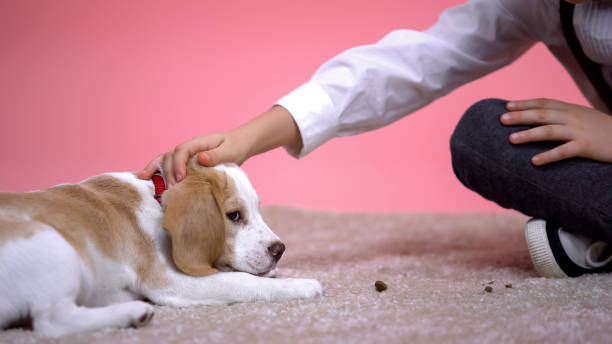Behavioral Pet Tips
Pet Behavior Improvement: Effective Strategies for Enhancing Your Pet’s Behavior
Improving your pet’s behavior can lead to a more harmonious household and a happier, healthier pet. Whether you’re dealing with behavioral issues or simply looking to fine-tune your pet’s manners, employing effective strategies is key. Here’s a comprehensive guide to help you enhance your pet’s behavior.
1. Understanding Your Pet’s Behavior
a. Identify the Root Cause
- Behavioral Triggers: Observe your pet to understand what triggers undesirable behaviors. Triggers may include boredom, lack of exercise, or environmental changes.
- Health Concerns: Some behavioral issues may stem from underlying health problems. Ensure your pet undergoes a vet check-up to rule out medical causes.
b. Recognize Body Language
- Decipher Signals: Learn to read your pet’s body language. For dogs, signals include tail wagging, ear positioning, and growling. For cats, look for tail flicking, hissing, or crouching.
2. Positive Reinforcement Training
a. Reward-Based Training
- Immediate Rewards: Reinforce positive behavior by offering treats, praise, or toys immediately after your pet performs the desired action. This helps them associate good behavior with rewards.
- Consistency: Apply rewards consistently to reinforce good behavior. Avoid giving rewards for undesirable actions to prevent confusion.
b. Clicker Training
- Clicker Technique: Use a clicker to mark desirable behaviors precisely. Pair the click with a reward to reinforce the behavior. Clicker training is effective for teaching commands and tricks.
3. Addressing Common Behavioral Issues
a. Excessive Barking or Whining
- Identify the Cause: Determine if barking or whining is due to boredom, anxiety, or a need for attention.
- Training Solutions: Use commands like “quiet” and reward your dog when they stop barking. Ensure your dog gets ample exercise and mental stimulation.
b. Destructive Chewing or Scratching
- Provide Alternatives: Offer appropriate chew toys or scratching posts to redirect your pet’s attention from household items.
- Training and Deterrents: Use deterrent sprays or training techniques to discourage unwanted chewing or scratching. Reinforce positive behavior with rewards.
c. Aggression
- Avoid Triggers: Prevent situations that may provoke aggressive behavior. Assess if aggression is towards people, other animals, or specific situations.
- Seek Professional Help: Consult a professional animal behaviorist or trainer for aggressive behaviors. They can provide tailored strategies and support.
4. Socialization and Training
a. Early Socialization
- Exposure to New Experiences: Introduce your pet to various people, animals, and environments from an early age. Positive exposure reduces fear and aggression.
- Training Classes: Enroll puppies or kittens in socialization classes to learn essential behaviors and interact with other pets.
b. Obedience Training
- Basic Commands: Teach commands like sit, stay, come, and down. Consistent training sessions with clear commands help improve behavior.
- Advanced Training: For more complex behaviors, consider advanced classes or specialized training programs.
5. Creating a Positive Environment
a. Routine and Structure
- Consistent Schedule: Establish a consistent daily routine for feeding, exercise, and training. Predictable routines help pets feel secure and reduce behavioral issues.
- Safe Space: Provide a comfortable space where your pet can retreat and relax. This helps alleviate stress and promotes well-being.
b. Enrichment Activities
- Mental Stimulation: Offer interactive toys, puzzles, and games to keep your pet mentally engaged. Enrichment activities prevent boredom and destructive behaviors.
- Physical Exercise: Ensure your pet gets adequate physical exercise through walks, playtime, or activities suited to their breed and age.
6. Behavioral Modification Techniques
a. Desensitization
- Gradual Exposure: For pets with fear or anxiety, use gradual desensitization to expose them to the feared stimulus in a controlled manner. Pair the exposure with positive reinforcement to change their emotional response.
b. Counter-Conditioning
- Change Associations: Modify your pet’s emotional response to a negative stimulus by associating it with positive experiences. For example, reward your dog with treats when they encounter a previously feared object.
7. Professional Assistance
a. Animal Behaviorists
- Expert Guidance: For complex issues, consult a certified animal behaviorist. They can provide a detailed assessment and create a customized behavior modification plan.
b. Training Classes
- Group and Private Sessions: Consider group training classes or private sessions with a professional trainer. Training classes offer structured learning and socialization opportunities.
8. Monitoring Progress
a. Track Improvements
- Behavioral Logs: Keep a record of your pet’s behavior, training progress, and any changes in their environment. Tracking helps identify patterns and measure the effectiveness of your interventions.
b. Adjust Strategies
- Flexibility: Be prepared to adjust your training techniques and strategies based on your pet’s progress and evolving needs. Flexibility and patience are essential for successful behavior improvement.
Conclusion
Enhancing your pet’s behavior involves understanding their needs, using positive reinforcement, and creating a supportive environment. By addressing common behavioral issues, providing proper training, and seeking professional help when necessary, you can improve your pet’s behavior and strengthen your bond. Consistent care and attention will lead to a well-behaved and content companion.

